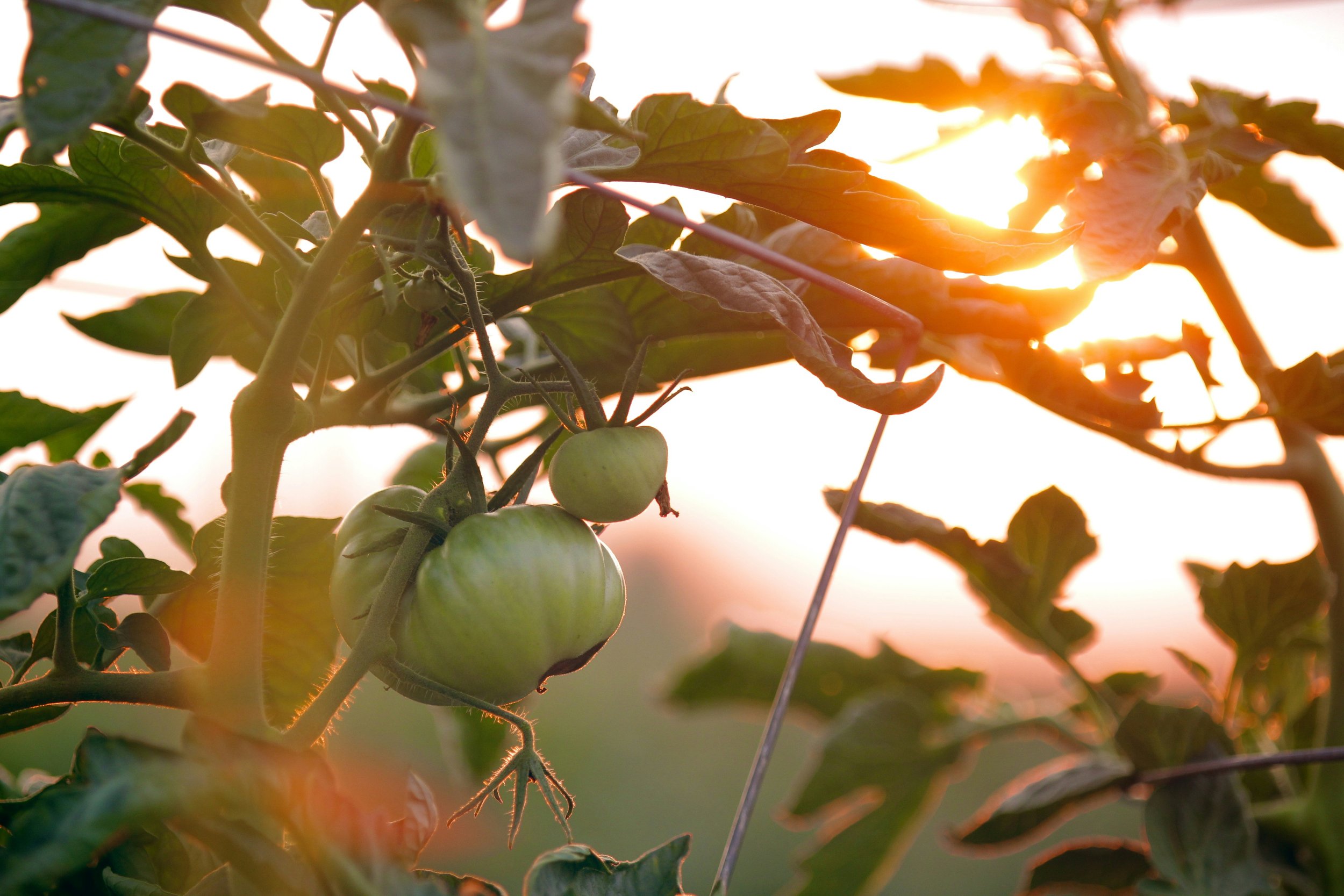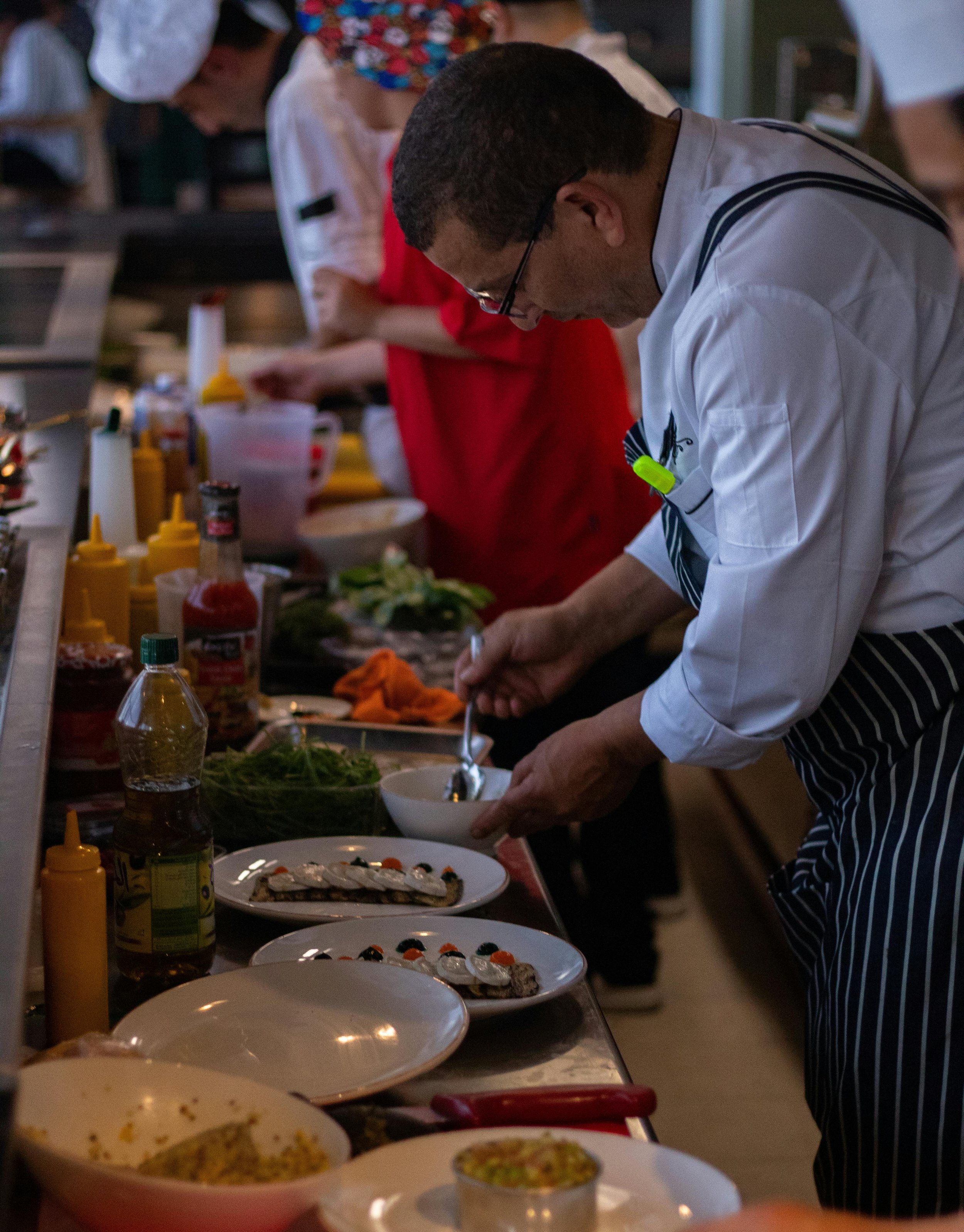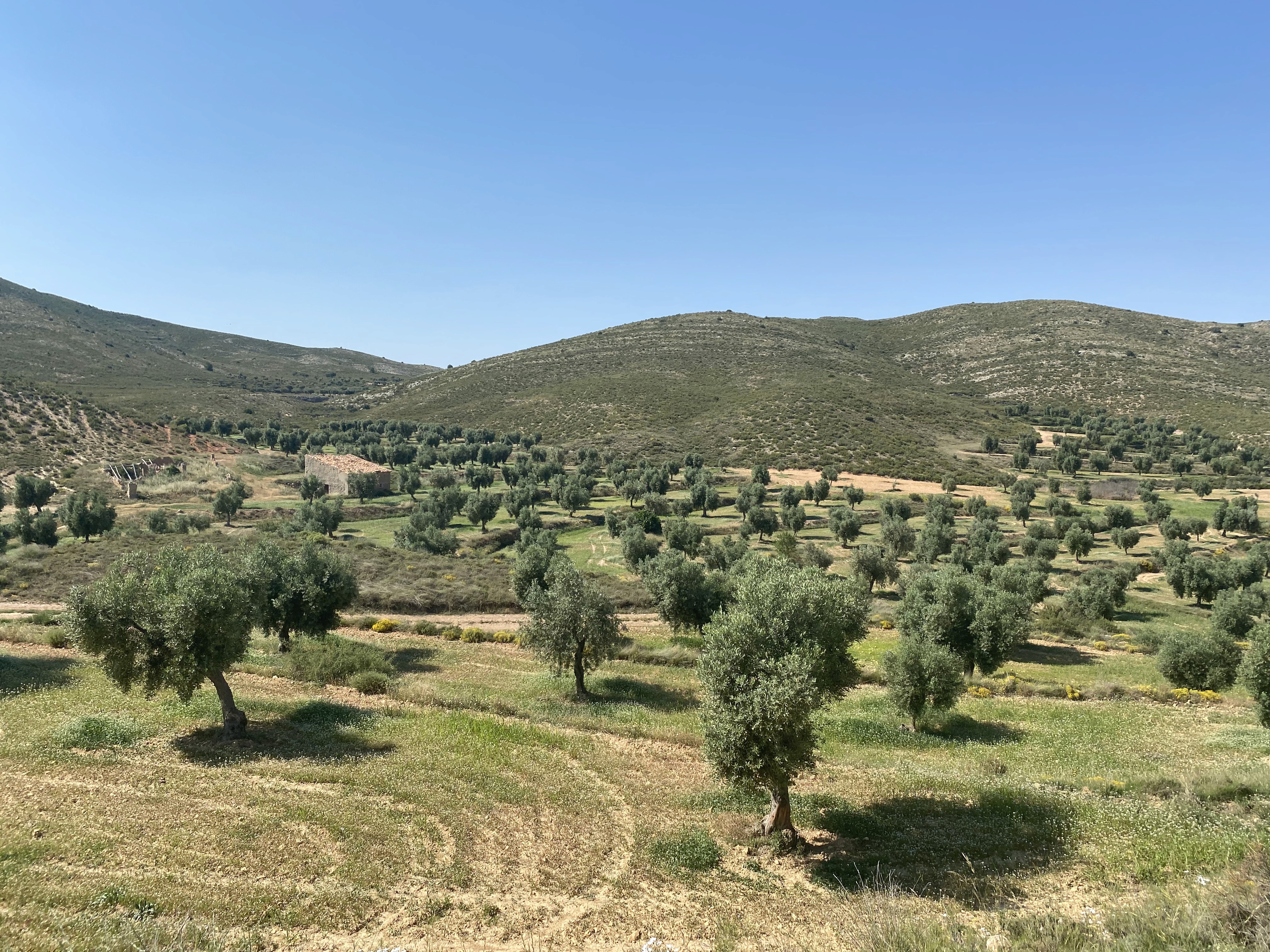Regenerative tourism
Regenerative tourism
How can tourism contribute to the sustainable management of food?
How can tourism contribute to the sustainable management of food?
29 de febrero de 2024


By Sandra Campos, consultant specialized in tourism, and Pako Rodríguez, head of the tourism area. (Original publication in Spanish)
Do you know the impact of the tourism sector on food? Do you know good practices that contribute to sustainability? We are launching the FiturNext 2025 Challenge, dedicated to how tourism can contribute to the sustainable management of food. Don't miss all the details of this upcoming call.
What is food surplus?
Before we start, let's talk about terms. From the FiturNext Observatory and Ideas for Change, we adopt a proactive stance, focused on innovation and positive terminology. For this reason, we propose to talk about "surplus" rather than "waste", since the latter term can lead one to consider any leftover as waste, exhausting the possibilities of alternative uses for the generated waste. Adopting a stance of "surplus" adds an alternative value related to circularity opportunities or any other form of utilization.
Based on this, we can define food surplus as the waste of agricultural and food products that are still perfectly edible and suitable for human consumption and that, in the absence of alternative uses, end up discarded as waste (1). This surplus is generated worldwide and at all stages of the food chain, which has made it a prominent global issue.
In fact, target 12.3 of the United Nations Sustainable Development Goals states:
"By 2030, halve per capita global food waste at the retail and consumer levels and reduce food losses along production and supply chains, including post-harvest losses (2)." - SDG
According to the Food and Agriculture Organization of the United Nations (FAO), every year one third of all food produced for human consumption is lost or wasted. This is equivalent to 1.3 billion tons (3), around 180,000 times the weight of the Eiffel Tower. In fact, it is estimated that 28% of the land allocated to agricultural production worldwide is used to produce food that will never be consumed (4).
Moreover, there is a geographical contrast in relation to food surplus: 14% of food is discarded at the harvesting, production, and distribution stages, especially in developing countries. The remaining 17% is wasted at the consumption stage, primarily in developed countries. This contrast can be exemplified based on the following data: per capita food losses, including stages prior to consumption in Europe and America, range from 280 to 300 kg/year, while in Africa and Asia they range from 120 to 170 kg/year. For their part, consumer food losses average between 95 to 115 kg per person per year in Europe and America, while this figure is reduced in Africa and Asia, ranging from 6 to 11 kg per year per consumer (5). Only in Spain in 2020, the seventh country in the EU generating the most food surplus, 1.364 billion food leftovers were discarded, averaging 31 kg per person (6). If we consider future projections, it is expected that by 2030 food waste will increase by 60%, resulting in a loss of more than 1.5 trillion dollars (7). In fact, it is estimated that to feed the global population by 2050, current food production would need to increase by 75%, which in turn would increase the volume of food surpluses (8). The generation of surpluses that end up as waste creates a triple unsustainable global impact:Environmental Impact: This food waste is responsible for 8% of global carbon emissions (9), which represents an avoidable environmental cost. Economic Impact: it is estimated that annual global losses amount to around 940 billion dollars.Ethical and Social Impact: more than one billion tons of food is thrown away each year while 1 in 9 people in the world is undernourished (10).
Food Surplus and Tourism
Food surplus can be exacerbated by tourism: the lack of process optimization, irresponsible consumption, or inadequate food storage are the main causes of surpluses in the industry.
The proliferation of travel has contributed to increasing food waste, as confirmed by sector data: according to the International Air Transport Association (IATA), between 1.2 billion and 1.5 billion untouched food waste ends up in landfills each year (11). According to the Spanish Association of Commercial Coding (AECOC), the hospitality sector alone is responsible for 14% of the annual food surplus generated in Spain (12).
The impact of tourism on food management is such that UN Tourism (formerly UNWTO) launched in 2022 the Global Roadmap for the Reduction of Food Waste in the Tourism Sector, as part of the Recommendations for the Transition to a Green Economy in Tourism and Travel (13).
Based on all the above, it seems appropriate to affirm that tourism is a highly significant industry for reducing food surplus, as well as creating new alternative opportunities for waste. This idea is the roadmap for the 2025 edition challenge of the FiturNext Observatory.

How can tourism contribute to the sustainable management of food: FiturNext 2025 Challenge
The Fitur Observatory of good practices in sustainable tourism, whose objective is the identification, promotion, and distinction of globally impactful projects in the tourism sector, focuses its fifth edition on the sustainability of food management in tourism, as well as in its transversal sectors.
From a regenerative perspective, the new edition seeks to reward those good practices that offer reduction or the creation of new possibilities for the use of food excess throughout the entire tourism food chain.
Under the title How can tourism contribute to the sustainable management of food? this new edition is structured into three impact categories:
Destinations and other territories: Targeted at territorial administrative entities that have focused their efforts on improving food management in the tourism sector.
Horeca and transportation sector: Targeted at organizations of any kind in the subsectors of hospitality, catering, cafes, and transportation that have implemented measures to optimize food management.
Other agents in the food value chain: Targeted at all the transversal agents in the tourism food chain who promote good practices in food sustainability.
FiturNext 2025 Call
You can now register your initiative focused on the sustainable management of food. The registration period will be open from March 1 to August 31, 2024.
Projects that reach the finals will participate in the activities held at our FITUR 2025 stand and subsequent actions and will benefit from the visibility provided by being part of the FiturNext community, thanks to its impact in the media and the synergies created among its participants.
References
1-AESAN - Spanish Agency for Food Safety and Nutrition. (n.d.). Food Waste https://www.aesan.gob.es/AECOSAN/web/para_el_consumidor/ampliacion/desperdicios.htm#:~:text=Existen%20diferentes%20definiciones%2C%20pero%20de,falta%20de%20posibles%20usos%20alternativos%2C
2- United Nations, (n.d.). Goal 12. Sustainable Consumption and Production - Sustainable Development Goals. https://www.un.org/sustainabledevelopment/es/sustainable-consumption-production/
3- Food and Agriculture Organization of the United Nations, (n.d.) Food loss and waste https://www.fao.org/policy-support/policy-themes/food-loss-food-waste/es/
4-Hosteltur, (2020). Hotels and startups, hand in hand to reduce food waste. https://www.hosteltur.com/133622_hoteles-y-startups-mano-a-mano-para-reducir-el-desperdicio-alimentario.html
5- United Nations Food and Agriculture Organization, (2011). Food losses and waste in the world. https://www.fao.org/3/i2697s/i2697s.pdf
6- Ministry of Agriculture, Fisheries, and Food of the Government of Spain, (2022). The Government approves a pioneering law against food waste for parliamentary processing. https://www.mapa.gob.es/es/prensa/ultimas-noticias/el-gobierno-aprueba-una-ley-pionera-contra-el-desperdicio-alimentario-para-su-tramitaci%C3%B3n-parlamentaria/tcm:30-620817
7- Boston Consulting Group, (2018). Addressing the food loss and waste crisis of 1.6 billion tons
https://www.bcg.com/publications/2018/tackling-1.6-billion-ton-food-loss-and-waste-crisis
8- Hosteltur, (2020). Hotels and startups, hand in hand to reduce food waste. https://www.hosteltur.com/133622_hoteles-y-startups-mano-a-mano-para-reducir-el-desperdicio-alimentario.html
9- Inter-American Development Bank (IDB), (2019). Why should food waste matter to the tourism sector?
10- Benidorm, Costa Blanca, and Valencia Community Hospitality Business Association, (2019). Guide to combating food waste in vacation hotels in the Valencia Community. https://www.turismecv.com/wp-content/uploads/2019/06/Gu%C3%ADa-para-la-lucha-contra-los-desperdicios-en-los-hoteles.pdf
11- International Air Transport Association (IATA), (2023). Sustainable Cabin: Cabin Waste and Single-Use Plastics https://www.iata.org/en/iata-repository/pressroom/fact-sheets/fact-sheet---cabin-waste/
12- Hosteltur, (2020). Hotels and startups, hand in hand to reduce food waste
13- UN Tourism, (n.d.). Global roadmap for the reduction of food waste in the tourism sector. https://www.unwto.org/es/desarrollo-sostenible/reduccion-del-desperdicio-de-alimentos-en-el-sector-turistico
By Sandra Campos, consultant specialized in tourism, and Pako Rodríguez, head of the tourism area. (Original publication in Spanish)
Do you know the impact of the tourism sector on food? Do you know good practices that contribute to sustainability? We are launching the FiturNext 2025 Challenge, dedicated to how tourism can contribute to the sustainable management of food. Don't miss all the details of this upcoming call.
What is food surplus?
Before we start, let's talk about terms. From the FiturNext Observatory and Ideas for Change, we adopt a proactive stance, focused on innovation and positive terminology. For this reason, we propose to talk about "surplus" rather than "waste", since the latter term can lead one to consider any leftover as waste, exhausting the possibilities of alternative uses for the generated waste. Adopting a stance of "surplus" adds an alternative value related to circularity opportunities or any other form of utilization.
Based on this, we can define food surplus as the waste of agricultural and food products that are still perfectly edible and suitable for human consumption and that, in the absence of alternative uses, end up discarded as waste (1). This surplus is generated worldwide and at all stages of the food chain, which has made it a prominent global issue.
In fact, target 12.3 of the United Nations Sustainable Development Goals states:
"By 2030, halve per capita global food waste at the retail and consumer levels and reduce food losses along production and supply chains, including post-harvest losses (2)." - SDG
According to the Food and Agriculture Organization of the United Nations (FAO), every year one third of all food produced for human consumption is lost or wasted. This is equivalent to 1.3 billion tons (3), around 180,000 times the weight of the Eiffel Tower. In fact, it is estimated that 28% of the land allocated to agricultural production worldwide is used to produce food that will never be consumed (4).
Moreover, there is a geographical contrast in relation to food surplus: 14% of food is discarded at the harvesting, production, and distribution stages, especially in developing countries. The remaining 17% is wasted at the consumption stage, primarily in developed countries. This contrast can be exemplified based on the following data: per capita food losses, including stages prior to consumption in Europe and America, range from 280 to 300 kg/year, while in Africa and Asia they range from 120 to 170 kg/year. For their part, consumer food losses average between 95 to 115 kg per person per year in Europe and America, while this figure is reduced in Africa and Asia, ranging from 6 to 11 kg per year per consumer (5). Only in Spain in 2020, the seventh country in the EU generating the most food surplus, 1.364 billion food leftovers were discarded, averaging 31 kg per person (6). If we consider future projections, it is expected that by 2030 food waste will increase by 60%, resulting in a loss of more than 1.5 trillion dollars (7). In fact, it is estimated that to feed the global population by 2050, current food production would need to increase by 75%, which in turn would increase the volume of food surpluses (8). The generation of surpluses that end up as waste creates a triple unsustainable global impact:Environmental Impact: This food waste is responsible for 8% of global carbon emissions (9), which represents an avoidable environmental cost. Economic Impact: it is estimated that annual global losses amount to around 940 billion dollars.Ethical and Social Impact: more than one billion tons of food is thrown away each year while 1 in 9 people in the world is undernourished (10).
Food Surplus and Tourism
Food surplus can be exacerbated by tourism: the lack of process optimization, irresponsible consumption, or inadequate food storage are the main causes of surpluses in the industry.
The proliferation of travel has contributed to increasing food waste, as confirmed by sector data: according to the International Air Transport Association (IATA), between 1.2 billion and 1.5 billion untouched food waste ends up in landfills each year (11). According to the Spanish Association of Commercial Coding (AECOC), the hospitality sector alone is responsible for 14% of the annual food surplus generated in Spain (12).
The impact of tourism on food management is such that UN Tourism (formerly UNWTO) launched in 2022 the Global Roadmap for the Reduction of Food Waste in the Tourism Sector, as part of the Recommendations for the Transition to a Green Economy in Tourism and Travel (13).
Based on all the above, it seems appropriate to affirm that tourism is a highly significant industry for reducing food surplus, as well as creating new alternative opportunities for waste. This idea is the roadmap for the 2025 edition challenge of the FiturNext Observatory.

How can tourism contribute to the sustainable management of food: FiturNext 2025 Challenge
The Fitur Observatory of good practices in sustainable tourism, whose objective is the identification, promotion, and distinction of globally impactful projects in the tourism sector, focuses its fifth edition on the sustainability of food management in tourism, as well as in its transversal sectors.
From a regenerative perspective, the new edition seeks to reward those good practices that offer reduction or the creation of new possibilities for the use of food excess throughout the entire tourism food chain.
Under the title How can tourism contribute to the sustainable management of food? this new edition is structured into three impact categories:
Destinations and other territories: Targeted at territorial administrative entities that have focused their efforts on improving food management in the tourism sector.
Horeca and transportation sector: Targeted at organizations of any kind in the subsectors of hospitality, catering, cafes, and transportation that have implemented measures to optimize food management.
Other agents in the food value chain: Targeted at all the transversal agents in the tourism food chain who promote good practices in food sustainability.
FiturNext 2025 Call
You can now register your initiative focused on the sustainable management of food. The registration period will be open from March 1 to August 31, 2024.
Projects that reach the finals will participate in the activities held at our FITUR 2025 stand and subsequent actions and will benefit from the visibility provided by being part of the FiturNext community, thanks to its impact in the media and the synergies created among its participants.
References
1-AESAN - Spanish Agency for Food Safety and Nutrition. (n.d.). Food Waste https://www.aesan.gob.es/AECOSAN/web/para_el_consumidor/ampliacion/desperdicios.htm#:~:text=Existen%20diferentes%20definiciones%2C%20pero%20de,falta%20de%20posibles%20usos%20alternativos%2C
2- United Nations, (n.d.). Goal 12. Sustainable Consumption and Production - Sustainable Development Goals. https://www.un.org/sustainabledevelopment/es/sustainable-consumption-production/
3- Food and Agriculture Organization of the United Nations, (n.d.) Food loss and waste https://www.fao.org/policy-support/policy-themes/food-loss-food-waste/es/
4-Hosteltur, (2020). Hotels and startups, hand in hand to reduce food waste. https://www.hosteltur.com/133622_hoteles-y-startups-mano-a-mano-para-reducir-el-desperdicio-alimentario.html
5- United Nations Food and Agriculture Organization, (2011). Food losses and waste in the world. https://www.fao.org/3/i2697s/i2697s.pdf
6- Ministry of Agriculture, Fisheries, and Food of the Government of Spain, (2022). The Government approves a pioneering law against food waste for parliamentary processing. https://www.mapa.gob.es/es/prensa/ultimas-noticias/el-gobierno-aprueba-una-ley-pionera-contra-el-desperdicio-alimentario-para-su-tramitaci%C3%B3n-parlamentaria/tcm:30-620817
7- Boston Consulting Group, (2018). Addressing the food loss and waste crisis of 1.6 billion tons
https://www.bcg.com/publications/2018/tackling-1.6-billion-ton-food-loss-and-waste-crisis
8- Hosteltur, (2020). Hotels and startups, hand in hand to reduce food waste. https://www.hosteltur.com/133622_hoteles-y-startups-mano-a-mano-para-reducir-el-desperdicio-alimentario.html
9- Inter-American Development Bank (IDB), (2019). Why should food waste matter to the tourism sector?
10- Benidorm, Costa Blanca, and Valencia Community Hospitality Business Association, (2019). Guide to combating food waste in vacation hotels in the Valencia Community. https://www.turismecv.com/wp-content/uploads/2019/06/Gu%C3%ADa-para-la-lucha-contra-los-desperdicios-en-los-hoteles.pdf
11- International Air Transport Association (IATA), (2023). Sustainable Cabin: Cabin Waste and Single-Use Plastics https://www.iata.org/en/iata-repository/pressroom/fact-sheets/fact-sheet---cabin-waste/
12- Hosteltur, (2020). Hotels and startups, hand in hand to reduce food waste
13- UN Tourism, (n.d.). Global roadmap for the reduction of food waste in the tourism sector. https://www.unwto.org/es/desarrollo-sostenible/reduccion-del-desperdicio-de-alimentos-en-el-sector-turistico


